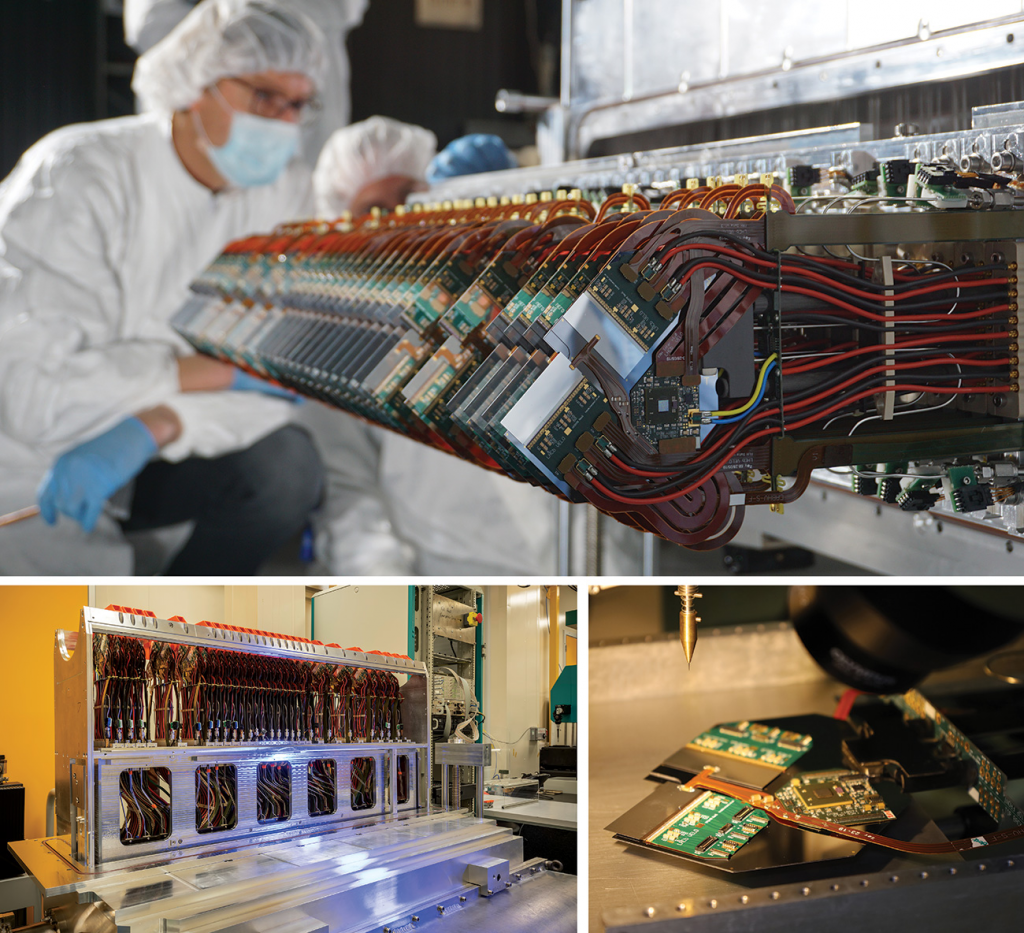The LHC proton beams pass through the full length of the detector, safely encased within a beryllium pipe. The only point where the beams collide is a small elliptical interaction region within the VELO sub-detector. These collisions produce a plethora of particles and particles, some containing heavy b and anti-b quarks. The locations of the origin of these particles are called “primary vertices”, while the precise points in space where they decay are “secondary vertices”. VELO is designed to very accurately measure the position of these vertices.
This allows VELO to pick out interesting particles, such as B hadrons, from the multitude of other particles produced – a tricky task as these particles have extremely short life-times and barely leave the vicinity of the beam. To find them, the VELO’s 52 silicon detector elements must be positioned perilously close to the point where protons collide, at a distance of just five millimetres.

To prevent damage from the LHC proton beams, which both possess the energy of a high speed train, the VELO employs a novel design feature. Its sensitive detector elements are held out of harm’s way while the beams are being injected and stabilized, but once safe, the silicon elements are moved mechanically in towards the beam to hunt for particles.
The VELO measures the distance between the point where protons collide (and where particles containing beauty quarks are created) and the point where the these particles decay, spraying out other particles that VELO can detect. The B hadrons are therefore never measured directly – their presence is inferred from the separation between these two positions. Nevertheless, the VELO can locate the position of B particles to within 10 microns (100th of a millimetre).
